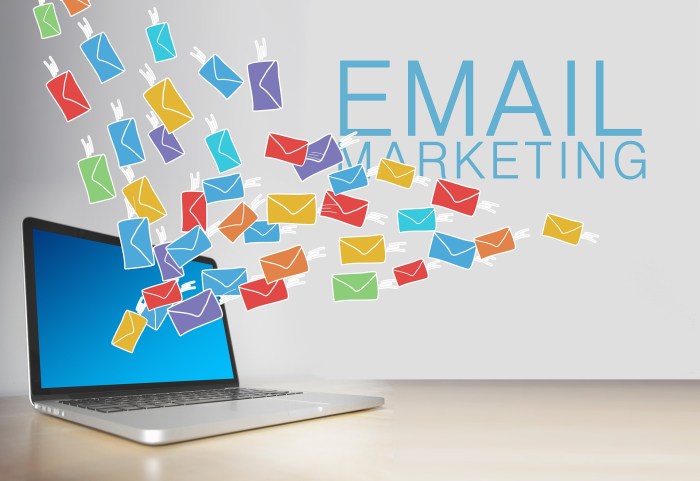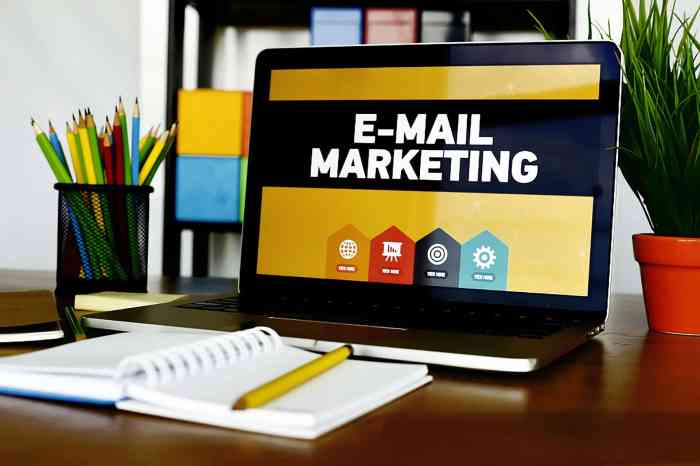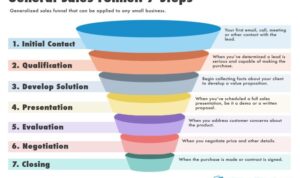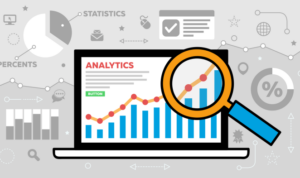Email Marketing Campaigns: Get ready to dive into the world of strategic email campaigns that can take your business to new heights. From defining what they are to exploring successful examples, this topic is all about maximizing your marketing potential.
Learn about key elements, segmentation, personalization, testing, and optimization to create impactful campaigns that resonate with your audience.
Introduction to Email Marketing Campaigns

Email marketing campaigns are targeted, strategic efforts to promote products, services, or events through email communication. These campaigns involve sending out emails to a list of subscribers with the goal of driving engagement, increasing sales, or building brand awareness.
Email marketing campaigns are crucial for businesses as they provide a direct line of communication with customers and potential customers. They allow businesses to reach a large audience at a relatively low cost, making it a cost-effective marketing strategy. Additionally, email campaigns can be personalized, allowing businesses to tailor their messages to specific segments of their audience for higher engagement and conversion rates.
Importance of Email Marketing Campaigns for Businesses
- Email campaigns help businesses stay connected with their audience and build relationships over time.
- They can drive traffic to a business’s website or online store, increasing the chances of conversions.
- Email marketing campaigns can provide valuable data and insights into customer behavior and preferences, helping businesses make informed marketing decisions.
- They are measurable, allowing businesses to track the success of their campaigns and make adjustments for better results.
Examples of Successful Email Marketing Campaigns
- Amazon’s personalized recommendation emails based on customer browsing and purchase history.
- Sephora’s targeted promotional emails offering discounts on products frequently purchased or viewed by customers.
- Dollar Shave Club’s witty and engaging email campaigns that resonate with their audience and drive sales.
Elements of a Successful Email Marketing Campaign

When it comes to running a successful email marketing campaign, several key elements play a crucial role in engaging your audience and driving conversions. From catchy subject lines to compelling content and clear call-to-action, each component contributes to the overall effectiveness of your campaign.
Subject Lines
Crafting attention-grabbing subject lines is essential to entice recipients to open your emails. Personalizing subject lines based on segmentation data can significantly increase open rates and engagement. A/B testing different subject lines can help determine which ones resonate best with your audience.
Content
The content of your emails should be informative, relevant, and valuable to the reader. Use a mix of text, visuals, and multimedia to keep your audience engaged. Segmentation and personalization can help tailor content to specific groups, increasing relevance and driving conversions.
Visuals
Incorporating eye-catching visuals such as images, videos, and infographics can enhance the overall appeal of your emails. Visual content can help convey your message more effectively and increase engagement rates. Make sure your visuals are optimized for different devices and email clients.
Call-to-Action, Email Marketing Campaigns
A clear and compelling call-to-action is crucial for guiding recipients towards the desired action, whether it’s making a purchase, signing up for a webinar, or downloading a resource. Use action-oriented language and make your CTA stand out visually to drive conversions.
Segmentation and Personalization
Segmenting your email list based on factors like demographics, behavior, and purchase history allows you to send targeted and relevant content to different groups of subscribers. Personalizing emails with recipient’s names, preferences, and past interactions can significantly improve engagement and conversion rates.
Testing and Optimization
Testing different elements of your email campaigns, such as subject lines, content, visuals, and CTAs, is essential to understand what resonates best with your audience. Analyzing key metrics like open rates, click-through rates, and conversion rates can help identify areas for improvement and optimize future campaigns for better results.
Building an Email Marketing Campaign Strategy
When it comes to creating a successful email marketing campaign, having a solid strategy in place is key. This involves outlining the steps needed to reach your target audience effectively, setting clear goals and objectives, and planning out your content calendar for maximum impact.
Setting Goals and Objectives
To start off your email marketing campaign strategy, it’s crucial to establish specific goals and objectives that you hope to achieve. Whether it’s increasing website traffic, boosting sales, or growing your subscriber list, having clear objectives will help guide your campaign in the right direction.
- Determine what you want to accomplish with your email marketing campaign, whether it’s generating leads, nurturing existing customers, or promoting a new product.
- Set measurable goals that are attainable within a specific timeframe, such as increasing open rates by a certain percentage or driving a certain number of conversions.
- Regularly track and analyze your campaign performance to see if you’re meeting your goals and adjust your strategy as needed.
Creating a Content Calendar
Planning out your content calendar is essential for ensuring that your email marketing campaigns are consistent, relevant, and engaging for your audience. This involves scheduling when and what type of content will be sent out to subscribers.
- Map out a timeline for your email campaigns, including important dates, holidays, and events that may impact your strategy.
- Develop a content plan that aligns with your goals and objectives, ensuring that each email serves a specific purpose in your overall campaign strategy.
- Consider the frequency of your emails and the best times to send them based on your target audience’s behavior and preferences.
Email List Management for Campaigns: Email Marketing Campaigns
When it comes to running successful email marketing campaigns, managing your email list is crucial. A clean and segmented email list can greatly impact the effectiveness of your campaigns.
The Significance of a Clean and Segmented Email List
A clean email list ensures that your messages reach the right audience, improving open rates and engagement. Segmentation allows you to target specific groups with personalized content, increasing the chances of conversions.
Best Practices for Growing and Maintaining an Email List
- Offer valuable content or incentives in exchange for email sign-ups to attract subscribers.
- Regularly clean your email list by removing inactive or unengaged subscribers to improve deliverability rates.
- Segment your email list based on demographics, behavior, or preferences to send targeted and relevant content.
- Use double opt-in to ensure that subscribers are genuinely interested in receiving your emails.
Tips to Avoid Common Pitfalls in Email List Management
- Avoid purchasing email lists as they often contain outdated or irrelevant contacts, leading to low engagement rates and spam complaints.
- Ensure compliance with data privacy regulations like GDPR to build trust with subscribers and protect their information.
- Monitor email engagement metrics regularly to identify trends and adjust your email marketing strategy accordingly.
- Provide easy opt-out options for subscribers who wish to unsubscribe to maintain a positive sender reputation.





